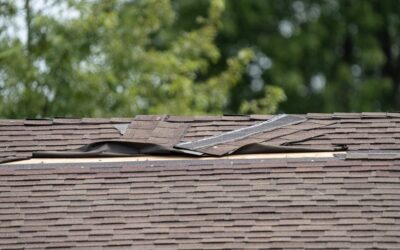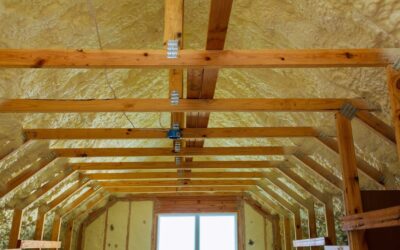The Ultimate Guide to Choosing the Right Commercial Roofing Contractor
When it comes to protecting your business or commercial property, your roof plays a critical role. A sturdy, well-maintained roof safeguards your assets, ensures operational continuity, and maintains the overall value of your property. But whether you’re installing a new roof, repairing damage, or planning routine maintenance, the most crucial decision you’ll make is choosing a qualified commercial roofing contractor.
In this comprehensive guide, we’ll explore what makes a great commercial roofing contractor, common roofing issues, repair and maintenance tips, and how to ensure your roofing project is a long-term investment.
What Is a Commercial Roofing Contractor?
A commercial roofing contractor is a professional who specializes in roofing projects for non-residential buildings. Unlike residential roofing, commercial roofing involves:
- Larger-scale projects
- Flat or low-slope roofing systems
- Specialized materials such as TPO, EPDM, PVC, modified bitumen, and metal roofing
- Compliance with building codes, safety standards, and commercial insurance requirements
Commercial roofing contractors work on a variety of properties, including:
- Office buildings
- Warehouses
- Factories
- Retail centers
- Schools and municipal buildings
They provide services like installation, repair, maintenance, inspections, and roof replacement, often with expertise in multiple roofing systems and materials.
Why Hiring a Professional Commercial Roofing Contractor Matters
Hiring the right commercial roofing contractor is not just about getting the job done—it’s about protecting your investment. Here’s why:
1. Expertise in Commercial Roofing Systems
Commercial roofing is far more complex than residential roofing. Contractors understand the different types of systems, such as flat roofs, built-up roofs (BUR), single-ply membranes, and metal roofing. Choosing the wrong system or installation method can lead to costly repairs down the line.
2. Ensures Safety
Commercial roofing projects often involve working at heights, heavy materials, and specialized equipment. Professional contractors follow OSHA safety guidelines, reducing the risk of accidents and liability.
3. Compliance with Local Building Codes
A licensed contractor ensures your roofing project complies with local building codes, permits, and regulations—avoiding fines or insurance complications.
4. Warranty and Insurance Protection
Reputable commercial roofing contractors provide warranties on both labor and materials. This protection ensures that if something goes wrong after installation or repair, you’re covered.
5. Saves Time and Money
Experienced contractors work efficiently, sourcing the right materials, managing labor, and completing projects on schedule. This reduces downtime and prevents costly mistakes.
Common Commercial Roofing Problems
Even the most durable commercial roofs encounter problems over time. Understanding common issues can help you make informed decisions about repairs and maintenance.
1. Leaks and Water Damage
Water intrusion is one of the most common issues in commercial roofing. Leaks can occur due to:
- Punctures in the roofing membrane
- Improperly sealed seams or flashing
- Age-related wear and tear
- Storm damage
Left untreated, leaks can damage insulation, electrical systems, and interior structures.
2. Ponding Water
Flat and low-slope roofs are prone to ponding water, which can accelerate membrane deterioration and cause leaks. Proper drainage installation and maintenance are crucial.
3. Blistering and Cracking
Temperature fluctuations can cause roofing materials to expand and contract, leading to blisters, cracks, and splits. These issues can compromise waterproofing and energy efficiency.
4. Roof Membrane Damage
Single-ply roofing membranes (like TPO, PVC, or EPDM) can be punctured by foot traffic, falling debris, or weather-related impacts. Membrane damage often requires professional repair to prevent leaks.
5. Flashing Issues
Flashing around roof penetrations such as vents, skylights, and HVAC units can deteriorate or become loose, creating pathways for water infiltration.
6. Aging Roofs
Over time, all roofing systems degrade. Regular inspections by a professional commercial roofing contractor help identify aging-related problems before they escalate.
Signs You Need a Commercial Roof Repair
Recognizing when it’s time to call a commercial roofing contractor can save money and prevent major damage. Look for these signs:
- Visible leaks or water stains inside the building
- Bubbling, cracking, or blistering roofing membranes
- Sagging areas or ponding water
- Loose or missing flashing
- Torn or punctured roofing materials
- Increased energy bills due to reduced insulation efficiency
A professional inspection can determine whether a repair or full replacement is needed.
Types of Commercial Roofing Systems
Choosing the right roofing system is essential for longevity, performance, and energy efficiency. Here are some common types of commercial roofs handled by contractors:
1. TPO (Thermoplastic Olefin)
TPO is a single-ply reflective membrane known for its energy efficiency, durability, and heat resistance. It’s popular for flat or low-slope commercial roofs.
2. EPDM (Ethylene Propylene Diene Monomer)
EPDM is a synthetic rubber membrane that offers flexibility, resistance to UV rays, and cost-effectiveness. It’s commonly used for low-slope or flat commercial roofs.
3. PVC (Polyvinyl Chloride)
PVC roofing is durable, fire-resistant, and energy-efficient. It’s ideal for commercial buildings requiring chemical resistance or high durability.
4. Metal Roofing
Metal roofing is long-lasting, energy-efficient, and suitable for industrial buildings. It can be installed as standing seam panels or corrugated sheets.
5. Built-Up Roofing (BUR)
BUR consists of multiple layers of asphalt and reinforcing fabrics, providing excellent waterproofing and durability for flat roofs.
6. Modified Bitumen
Modified bitumen combines asphalt with polymer additives, offering flexibility and resistance to temperature fluctuations.
A knowledgeable commercial roofing contractor can help you select the right system based on your building type, climate, and budget.
Commercial Roof Installation Process
Hiring a contractor for a new commercial roof involves several steps:
- Initial Consultation and Inspection: The contractor assesses the current roof, reviews building plans, and discusses your goals.
- Roof Design and Material Selection: The contractor recommends the best roofing system and materials.
- Permit Acquisition: The contractor obtains necessary building permits and ensures code compliance.
- Preparation and Tear-Off: The old roof may be removed, and the roof deck is prepared for installation.
- Installation: Roofing materials are installed according to manufacturer specifications and industry best practices.
- Flashing and Sealing: Critical areas like vents, skylights, and edges are properly sealed.
- Final Inspection and Cleanup: The contractor inspects the finished roof and removes debris from the site.
- Warranty and Documentation: Labor and material warranties are provided, along with maintenance recommendations.
Commercial Roof Maintenance Tips
Routine maintenance extends the life of your commercial roof and prevents expensive repairs. Recommended practices include:
- Regular Inspections: Have a professional inspect your roof at least twice a year.
- Clean Gutters and Drains: Prevent water accumulation by keeping drainage systems clear.
- Repair Minor Damage Promptly: Address leaks, punctures, and loose flashing immediately.
- Check Roof Membranes: Inspect for blisters, cracks, or wear.
- Trim Overhanging Trees: Prevent branches from damaging roofing materials.
- Document Maintenance: Keep records of inspections, repairs, and upgrades for warranty purposes.
Commercial Roof Replacement: When and Why
Sometimes, repairs are no longer sufficient, and a full roof replacement is necessary. Signs that it’s time include:
- Extensive membrane deterioration
- Multiple leaks that cannot be effectively repaired
- Roof nearing the end of its expected lifespan
- Structural damage to the roof deck
Replacing your commercial roof with the guidance of a qualified contractor ensures the project is completed safely, efficiently, and with long-term performance in mind.
How to Choose the Right Commercial Roofing Contractor
Selecting a trustworthy commercial roofing contractor is critical for project success. Consider the following:
1. Licensing and Insurance
Ensure the contractor is properly licensed and carries liability and workers’ compensation insurance.
2. Experience and Expertise
Look for contractors with extensive experience in commercial roofing projects, including the specific roofing system you require.
3. References and Reviews
Check online reviews and ask for references from previous clients to gauge reliability, quality, and customer service.
4. Transparent Pricing
A reputable contractor provides detailed estimates, including materials, labor, permits, and potential additional costs.
5. Warranties
Look for contractors who offer warranties on both labor and materials for added peace of mind.
6. Communication and Professionalism
Choose a contractor who communicates clearly, answers your questions, and provides timely updates throughout the project.
The Cost of Hiring a Commercial Roofing Contractor
The cost of hiring a commercial roofing contractor varies depending on factors such as:
- Roof size and complexity
- Roofing system type
- Material quality
- Labor and installation requirements
- Location and local building codes
Typical costs can range from $5 to $15 per square foot for flat roofing systems, while metal or specialized systems may be higher. While cost is important, quality workmanship and long-term durability should be your priority.
Financing Options for Commercial Roofs
Many commercial roofing contractors offer financing options to help businesses manage costs. Options may include:
 (440) 307-2060
(440) 307-2060




